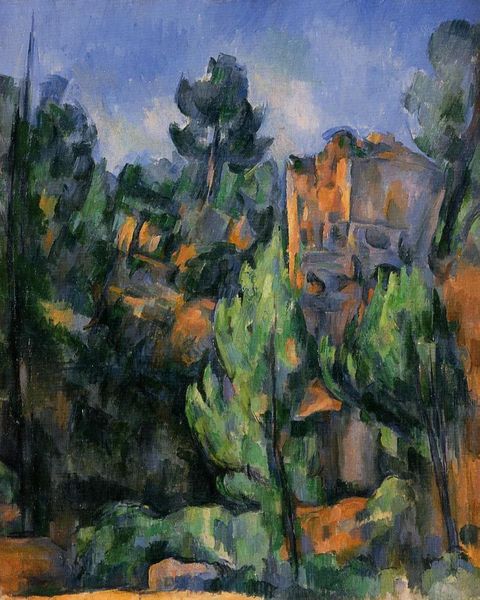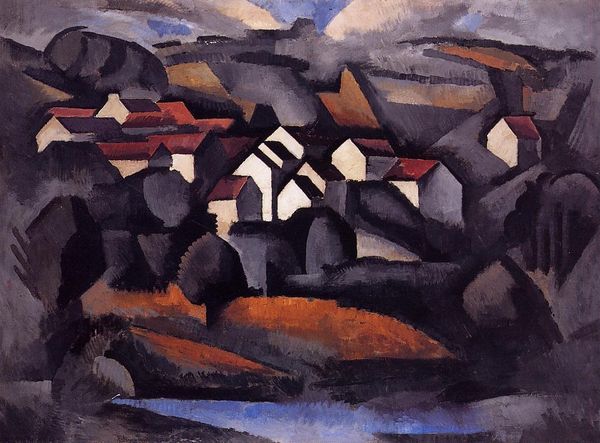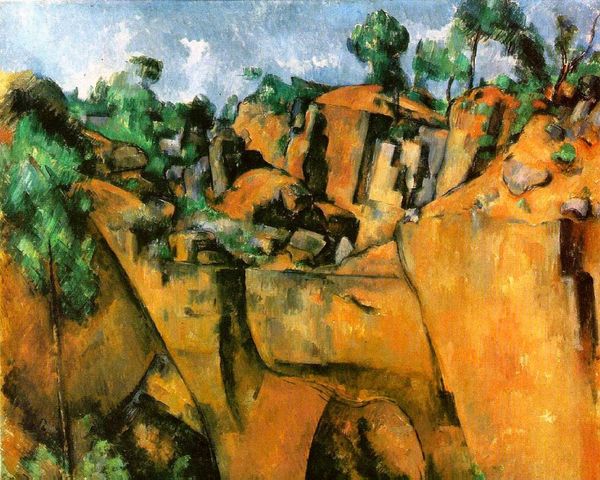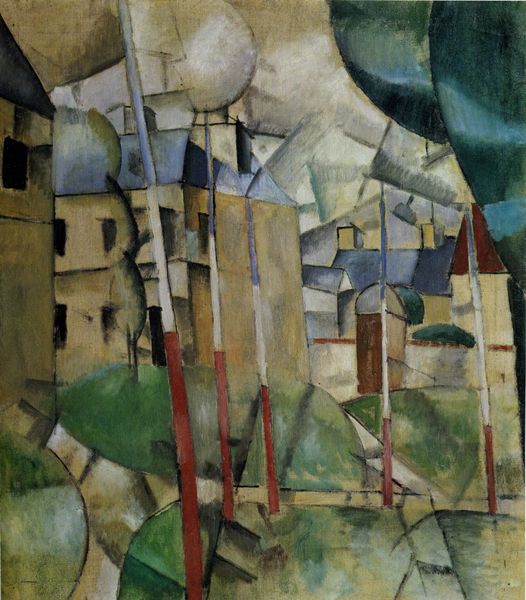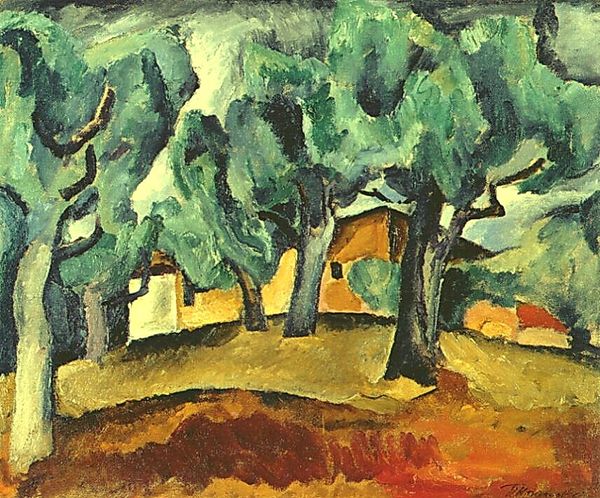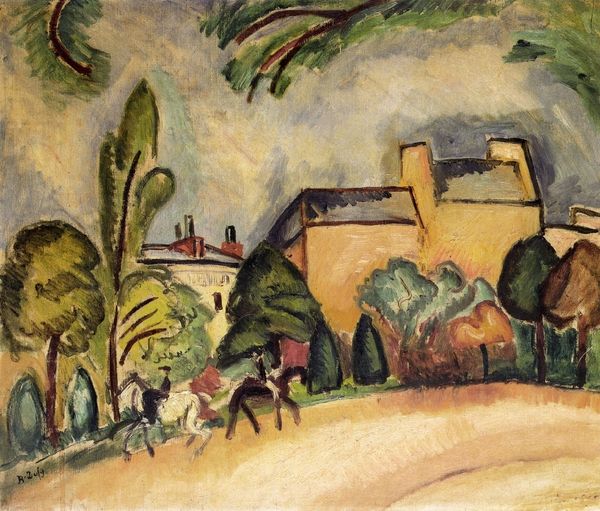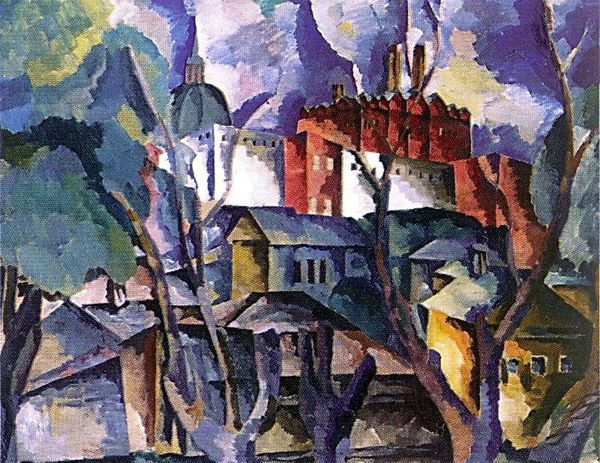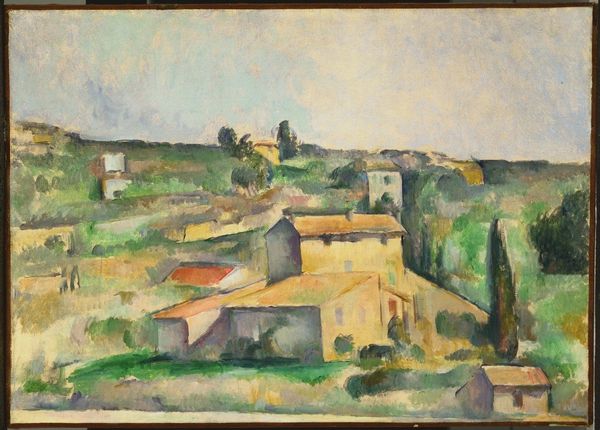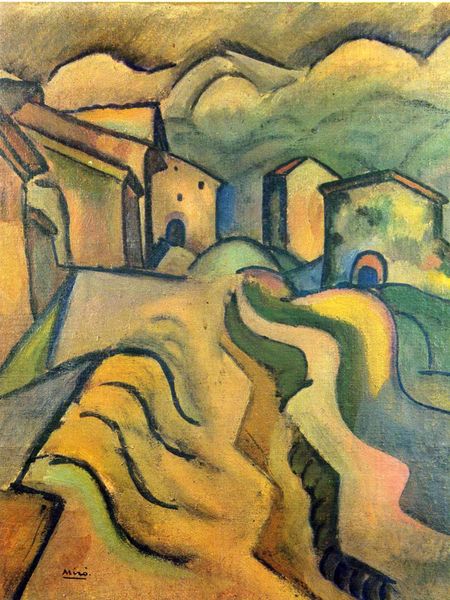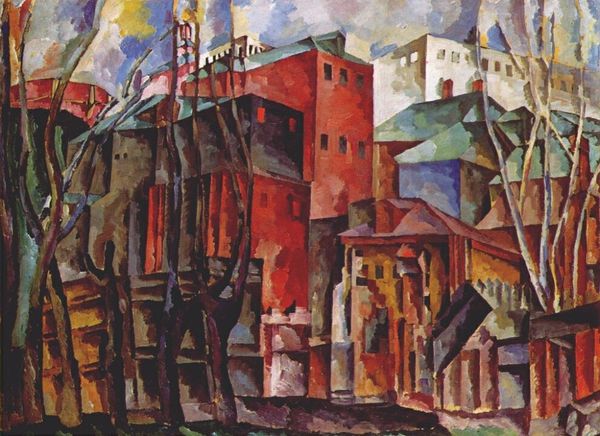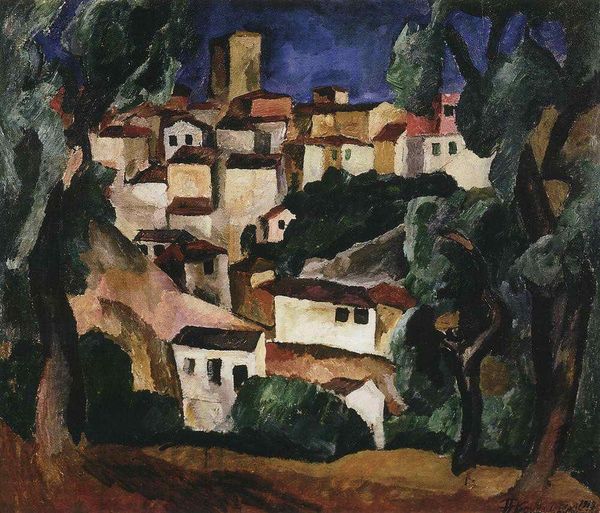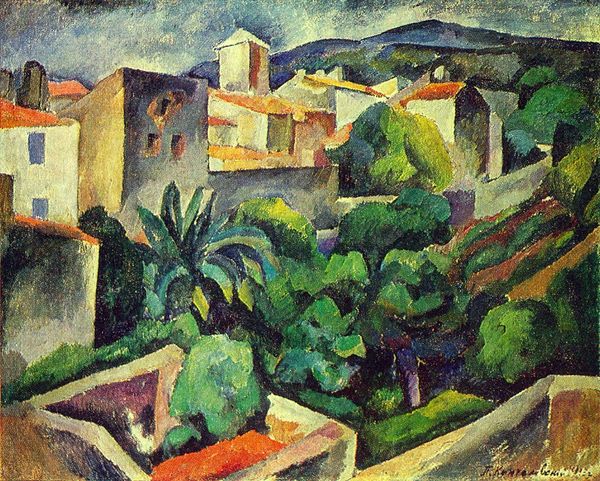
Dimensions: 80 x 96 cm
Copyright: Public domain US
Editor: So, this is "San Gimignano," painted by Pyotr Konchalovsky in 1912, using oil on canvas. I find the composition quite striking – almost like a child's building blocks, but somehow the color choices create a sense of depth. What do you see in this piece from a formal perspective? Curator: Indeed. Note how Konchalovsky uses color not just to represent objects, but as a structuring element itself. Observe the interplay between the greens of the foliage and the oranges and browns of the buildings. These aren’t just arbitrary choices; they’re carefully considered relationships. Editor: Are you saying the colors dictate the structure? Curator: Precisely! And it is through these colors that the painting establishes its inherent logic and balance. He almost treats the buildings as simple geometrical forms, not dissimilar to cubist strategies in painting at the time. He simplifies forms to highlight the surface’s pictorial structure, yet hints at representation. Editor: I see! The geometric shapes make the painting appear modern, even though it's depicting a cityscape that might feel more traditional otherwise. Curator: It's a push and pull. Note how the artist's hand is apparent through the brushwork and application of pigment on canvas. We get a clear view of the artist's creative processing through observing the materiality. Editor: This close attention to colour and shapes allows for different viewing perspectives. Thank you, it's a reminder of how important visual elements are, rather than getting caught up in external references! Curator: Precisely. I trust that our listeners can consider how such visual features contribute to a deeper understanding of the art object.
Comments
No comments
Be the first to comment and join the conversation on the ultimate creative platform.
